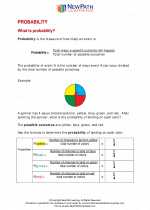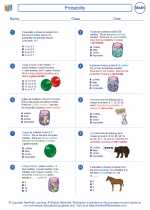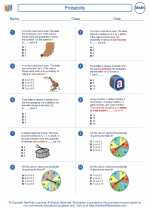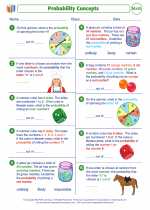Prism: Explanation and Study Guide
What is a Prism?
A prism is a three-dimensional shape with two parallel and congruent polygonal bases and rectangular or parallelogram faces. The bases are connected by the faces, and the cross-sections parallel to the bases are all congruent. The most common type of prism is a rectangular prism, which has two rectangular bases and four rectangular faces.
Types of Prisms
Prisms can come in various shapes and sizes. Some common types of prisms include:
- Rectangular Prism: Bases are rectangles and faces are rectangles.
- Square Prism: Bases are squares and faces are squares.
- Triangular Prism: Bases are triangles and faces are parallelograms.
- Pentagonal Prism: Bases are pentagons and faces are rectangles.
Formulas for Prisms
Here are some important formulas related to prisms:
- Surface Area of a Prism: 2 * (base area) + (perimeter of base) * (height of prism)
- Volume of a Prism: (base area) * (height of prism)
Example Problems
Now, let's solve some example problems related to prisms:
Example 1: Finding the Surface Area of a Rectangular Prism
Given a rectangular prism with length = 5 units, width = 3 units, and height = 4 units, find the surface area.
Solution: Surface Area = 2 * (length * width + length * height + width * height) = 2 * (5*3 + 5*4 + 3*4) = 2 * (15 + 20 + 12) = 2 * 47 = 94 square units
Example 2: Finding the Volume of a Triangular Prism
Given a triangular prism with base area = 10 square units and height = 6 units, find the volume.
Solution: Volume = (base area) * (height) = 10 * 6 = 60 cubic units
Conclusion
Prisms are important geometric shapes with various applications in mathematics and real-world scenarios. Understanding the properties and formulas related to prisms can help in solving problems related to surface area and volume.
.◂Math Worksheets and Study Guides Fifth Grade. Probability

 Worksheet/Answer key
Worksheet/Answer key
 Worksheet/Answer key
Worksheet/Answer key
 Worksheet/Answer key
Worksheet/Answer key
 Worksheet/Answer key
Worksheet/Answer key
